When you are organizing your bike to prepare for a ride one thing that you must check is your bike brake. There are several different types to choose from, but some will suit different bikes better, so it all depends on the bike you have and factors like its weight and the type of riding that you do.
Bicycle brakes are fitted onto the metal rims of your wheels or onto the wheel itself. So long as the type of brake you choose is compatible with your bike and its wheels, you’ll have no problem using them.
There are five types of bicycle brakes: caliper, cantilever, v-brakes, disc, and coaster. All five do a great job of ensuring clean braking, which will give you peace of mind as you cycle around and try out different routes.
Effective bike brakes will keep you safe and prevent any damage from happening to your bike if you need to stop unexpectedly.
Types of Bicycle Brake
Caliper Brakes
The most common type of bicycle brake is the caliper brake. It is used on so many bike models because it is a strong, durable and dependable brake that will ensure smooth, safe stopping every single time.
The caliper is a rim brake that clamps down on the metal rim by the front or rear tyre. Not only are they strong, these brakes are also subtle, so you’ll hardly notice that they’re there while you cycle.
They are a great choice for both beginner and experienced cyclists, and they are a staple addition to a road bike. One of the most affordable bike brakes, you can pick these up at pretty much any retailer, online or in-store.
Then, after purchasing the caliper brakes, you can install them onto your bike’s wheels through the gap in the brake bridge. You’ll need some brake cable and housing as well to properly install the caliper brakes.
They should be easily adjustable, allowing you to immediately try them out on a ride.
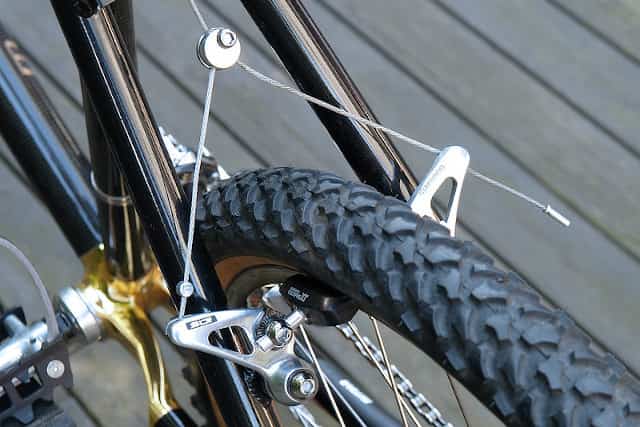
Cantilever Brakes
Cantilever brakes are rim brakes just like caliper brakes, but they are the better choice if your bike requires more stopping power. This could be if your bike is heavier, or if you want to cycle at a faster speed and still stop quickly.
You’ll also see greater clearance on muddy terrain or in harsh weather conditions with cantilever brakes, so you should choose these for off-road and non-casual cycling, such as on a touring bike or a mountain bike.
Cantilever brakes are less subtle than caliper brakes because they have two symmetrical brake arms that are attached to the rim with a center-pull mechanism.
To install them, set the brake pads so that the front of each touches the wheel’s rim.
You will likely have to readjust and tighten the brakes a few times to ensure that they are properly installed because cantilever brakes are thicker than caliper brakes.
Test the brakes after installing them to see if they make a squealing noise. Silent cantilever brakes are a sign that they are correctly installed and won’t bother you while you cycle.


V-Brakes
Just like cantilever brakes, v-brakes are also used when a bike requires greater stopping power. They are typically referred to as “V-brakes” because of Shimano’s trademark brakes, but their technical name is “linear-pull brakes”.
V-brakes differ from cantilever brakes because they have a side-pull instead of a center-pull. Because of their similarities, you can use v-brakes on the same bikes that you could install cantilever brakes on.
You mount v-brakes onto the same frame bosses as cantilevers, but the brake arms are longer.
The brake cable and housing for these brakes is distributed between the two, with the cable attached to one arm and the housing to the other.
You also want to avoid any squealing sounds with these brakes because that indicates that they are incorrectly installed. Don’t choose v-brakes for a road bike because the stopping power is far too great, but they are fantastic for off-road cycling on rugged terrain and if you are going to ride in difficult weather.
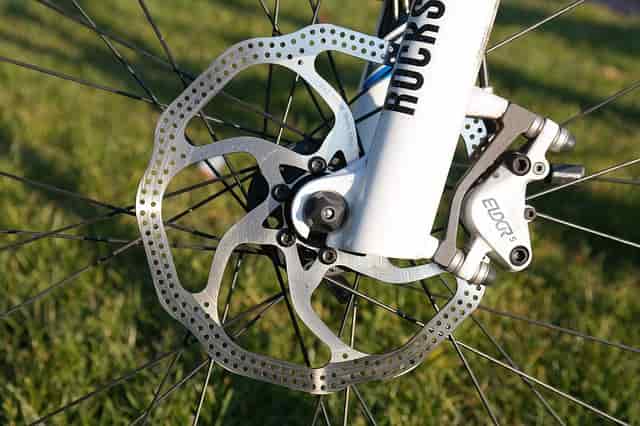
Disc Brake
Disc brakes differ from the previous three types because they are installed onto the wheels themselves, rather than the rims. These brakes have excellent stopping power that exceeds the strength of standard rim brakes.
You can also brake slightly later with disc brakes and be assured that your bike will stop, so you’ll be able to ride with more confidence and capability.
That is why disc brakes are preferable for off-road cycling and those who bike competitively.
Mechanical disc brakes do work with cables like rim brakes, but hydraulic disc brakes do not. You’ll have to remove the wheel from your bike to install disc brakes.
Most bikes with a suspension will have the post mounts to accommodate them, so you can install the brakes more easily, ensuring that every bolt has been firmly tightened afterwards.
You can change the rotor size of your disc brakes too for stronger or weaker braking power. It all depends on the type of cycling you do and the conditions in which you ride.
Coaster Brakes
When compared with the others, coaster brakes are quite unique because you can activate them by pedaling backwards. They get their name from the fact that you can also roll the bike without the pedals needing to turn, therefore “coasting”.
These brakes also require zero cables, making them easier to maintain than other types, and they will endure any weather conditions. One thing to remember is that you need to have your feet on the pedals to use coaster brakes.
Coaster brakes are a chain that is installed onto the wheel. You’ll need to set the bike upside down to install the coaster brake, then set about disassembling from the outside of the sprocket.
Once you have removed all of the axle nuts, slide the brake arm onto the axle and place the brake pads on the clutch. When you have successfully installed the brakes, reattach the wheel to the bike and tighten the axle nuts.
To test coaster brakes, sit on the bike and pedal backwards.
What Type Of Bike Brake Best Suit Your Ride?
As previously stated, caliper brakes are the best choice for a road bike.
Coaster brakes are also a good choice for road bikes because they are better suited to less intense biking, especially since you need your feet on the pedals to stop the bike.
If you are looking to tackle more challenging routes, ride your bike no matter the weather conditions, or cycle off-road, you should go for cantilever brakes, v-brakes or disc brakes.
For disc brakes, you’ll need the post mounts to fit them onto, but any bike with suspension should have those, so they are particularly suited to mountain bikes due to their heavy suspension.
Caliper brakes are the best choice for those on a budget, though none of the types mentioned are very expensive. If your bike is a Shimano then you may want to choose v-brakes because those are the trademark of that brand.
However, don’t use them on a Shimano road bike because the stopping power will be too strong.
If you have the time and energy to do plenty of maintenance work on your bike then you’ll reap the benefits of caliper brakes, cantilever brakes and v-brakes.
Hydraulic disc brakes don’t have any cables for you to look after and coaster brakes are very low maintenance anyway, so those are better if you have less time to spend on your bicycle.
Are V-Brakes Better Than Caliper?
V-brakes and caliper brakes are very different and both have their strengths. Though you install both types on the rims of your wheels, you will prefer the gentle braking of the caliper on your road bike, or a hybrid bike that you only ride on-road, because v-brakes would be overpowering and could unsteady you in the saddle.
The real benefits of v-brakes will only be seen on a touring or a mountain bike. For the rocky, uneven terrain of countryside and mountain surfaces, v-brakes are vastly superior to caliper brakes.
You will have more stopping power and a more precise stopping time with v-brakes even if your bike is unsettled by rugged terrain or harsh weather.
V-brakes will overpower a road bike, or any bike being cycled on smooth city surfaces, but caliper brakes are the right fit. V-brakes are better than caliper for the exact opposite, especially if riders want to cycle faster and with less caution on more difficult routes.
This does not mean that v-brakes are always better than caliper, just that each type suits a different bike, a different rider and a different set of circumstances.
Are Disc Brakes Worth It On My Bike?
Disc brakes are slowly revolutionizing bicycle brakes, so they are definitely worth investing in.
Again, you may not need the same level of braking power and precision on a road bike, but disc brakes are absolutely worth it for off-road cycling.
They also have a slightly tidier look about them because of the lack of cables (for hydraulic disc brakes) and the fact that they are installed onto the wheel instead of the rim.
Installing disc brakes is more of a hassle than any other type, but once they are on your bike you won’t have to adjust them unless you are changing the rotor size to adjust the stopping power.
Disc brakes will keep you ultra-safe because stopping is precise and immediate, which lowers your risk of injury if you choose to cycle harder routes.
You’ll also be able to brake straight away by using the handlebars, so nothing should ever happen to your bike. Any damage that cycling does cause to the bike will cost much more than disc brakes do.
Can I Convert My Bicycle To Disc Brake & How?
It is definitely possible to convert a bicycle with rim brakes to disc brake. All you need to do is disassemble part of the bike, remove the rim brakes and then install the disc brakes instead.
Your bike forks should already have the disc tabs required to install disc brakes, but always double check that before you start removing your former braking system.
If you are not completely sure of how to convert your bicycle, consult a professional for advice or help.
Removing your former braking system should take more time than installing the disc brakes because you need to pay extra attention to what you’re doing.
Make sure that you bolt the disc rotors to the wheel in the size that you require so that you aren’t caught out with your stopping power when you cycle.
If you choose to upgrade your bike frame at any point then you’ll already have the perfect disc braking system installed. In fact, one of the most convenient times to convert your bicycle to disc brake is when you are updating the frame or wheels because you’ll need to disassemble the bike anyway.
Bottom Line
Ultimately, it is up to you to choose the best type of brakes for your bike. You should also look beyond the model and consider when, where and how often you will be riding it.
Because your brakes need to keep up with your abilities.
You don’t want to wear them out because that would endanger both you and your bike. Once you have all of that figured out, shop around to find the best retailers for the type of brakes you need.
Also Read,
Presta vs Schrader Valves – What Are The Differences?
How To Make Bike Brake More Responsive? Adjust Bike Brakes Easy
Types of Mountain Bikes Explained ( Difference, Features )
Best Car Racks For Electric Bike – Build Model Type Compared

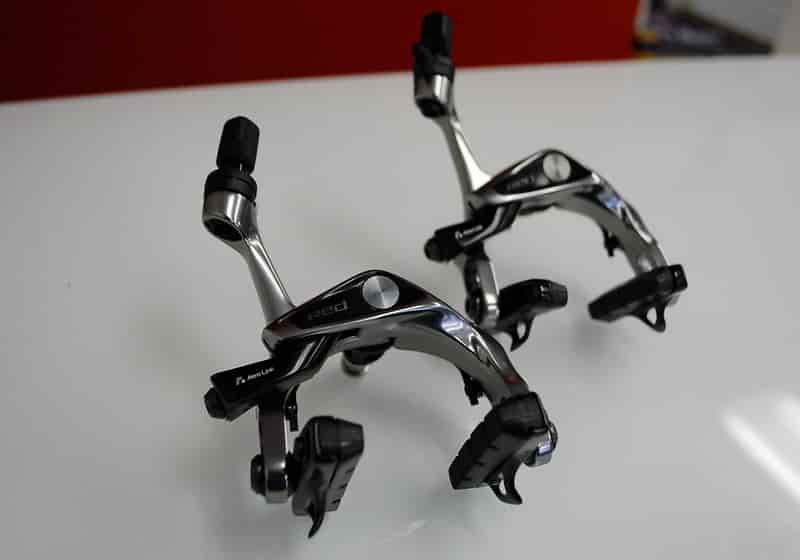
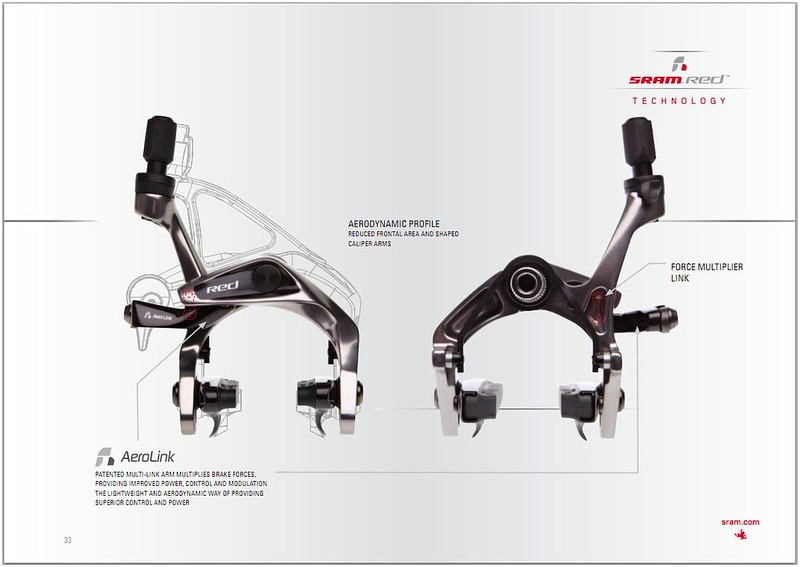



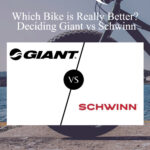




Leave a Reply